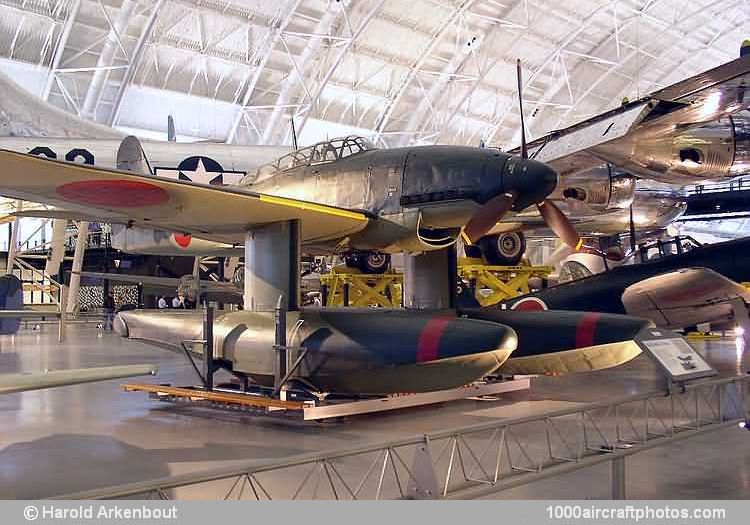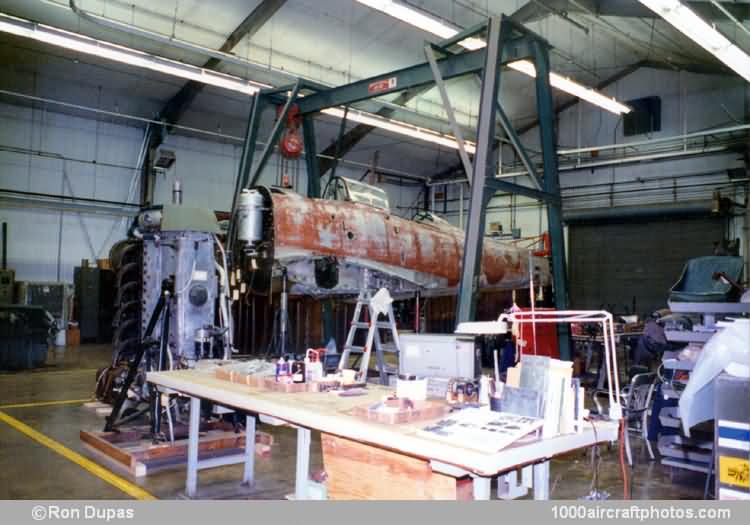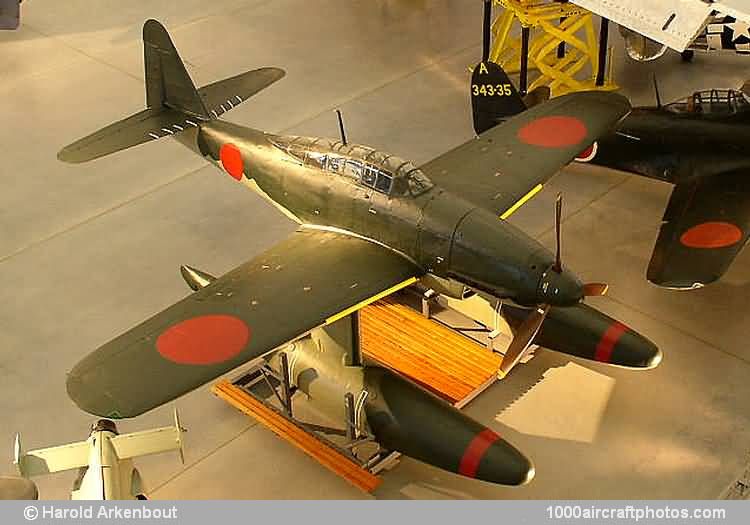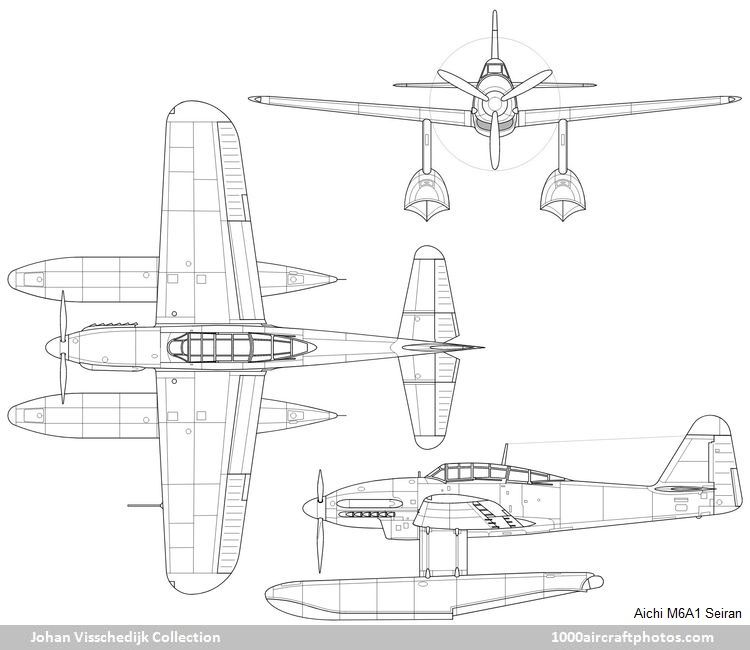09/30/2014. Remarks by Johan Visschedijk: "Bearing the distinction of being the only submarine-borne aircraft to have been built anywhere in the world with offensive missions as its primary role, the Aichi M6A1 Seiran (Mountain Haze) is assured a place in history even though WW II ended before the aircraft could fly its first sortie.
In their Fourth Reinforcement Program the Imperial Japanese Army Air Service (IJNAS) included a request for eighteen submarines of the I-400 Class. These very large submarines, each displacing 4,500 tons, were to have a cruising radius of 47,846 mls (77,000 km) at 16 mph (26 kmh) and were to be equipped with a large watertight hangar capable of accommodating two attack aircraft and with a catapult on the forward deck. However, the pressing need for more conventional submarines forced a revision of the plan and only five of this c1ass were actually ordered with an enlarged hangar accommodating three aircraft.
In 1942 Aichi were instructed to design a Navy Experimental 17-Shi Special Attack Bomber for use aboard the submarines of the I-400 Class. The original 17-Shi specification called for a fast catapult-launched aircraft without landing gear but this was later revised to provide for twin detachable floats. The design of the aircraft bearing the Aichi model number AM-24 was assigned to a team led by Norio Ozaki, Yasushiro Ozawa and Morishige Mori and, despite the added complexity stemming from the need to provide easy stowage in the small watertight hangar, the project progressed smoothly.
Two versions of the aircraft were designed, the M6A1 Seiran with detachable floats and intended for attack missions and the trainer version, the M6A1-K Seiran Kai, with retractable landing gear. The popular name of the M6A1-K was later changed to Nanzan (Southern Mountain). Of all-metal construction with fabric covered control surfaces, the M6A1 seated a crew of two in tandem enclosed cockpits. Armament consisted of a single flexible rear-firing 0.511 in (13 mm) Type 2 machine gun and it had provision for a bomb load of two 551 lb (250 kg) bombs, or one 1,764 lb (800 kg) or 1,874 lb (850 kg) bomb.
Completed in November 1943, the first prototype M6A1 Seiran was powered by a 1,400 hp Aichi AE1P Atsuta 30 twelve-cylinder liquid-cooled inverted V-engine. The aircraft was characterized by the complicated wing and tail folding system. The wings swiveled on their rear spar to lie flat along the fuselage, the tip of the vertical tail surfaces folded to starboard and the horizontal tail surfaces folded downward. Despite the apparent complexity of the folding mechanism and the lack of space aboard the submarine, the M6A1 could be readied for flight in less than seven minutes by four trained personnel. To facilitate night assembly fluorescent paint was applied to all important parts.
Seven additional prototypes powered by the Atsuta 31 engine were followed by eighteen Atsuta 32 powered M6A1 Seiran production aircraft and by two M6A1-K Nanzan with Atsuta 32 engine. The Nanzan was fitted with an inwardly-retracting landing gear, and the folding tip of the rudder was dispensed with as the absence of floats improved directional stability. Plans were on hand for an attack on the lock gates of the Panama Canal by the First Submarine Flotilla made up of the I-400 and I-401 submarines, each carrying three M6A1s, and of the 1-13 and 1-14 submarines, each carrying two Seirans. However, the target was changed to the US Navy's anchorage at Ulithi Atoll and the First Submarine Flotilla put to sea in late July 1945. The war ended before the attack could take place.
The sole surviving M6A1 at the NASM was the last of the 28 aircraft produced. At the end of the hostilities IJNAS Lt. Kazuo Akatsuka ferried it from Fukuyama to Yokosuka where he surrendered to the American forces. Subsequently it was shipped to the USA and put on display at NAS Alameda, California. In November 1962 it was transferred to NASM's Paul E. Garber Facility in Silver Hill, Maryland, where it stood outdoors for twelve years.



